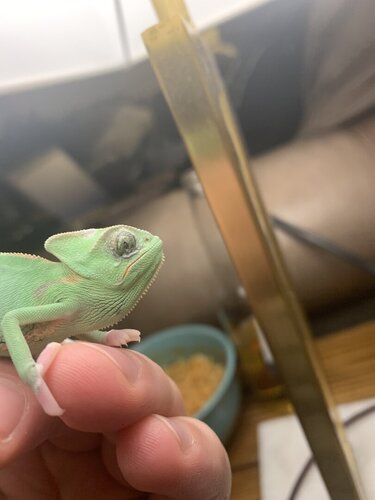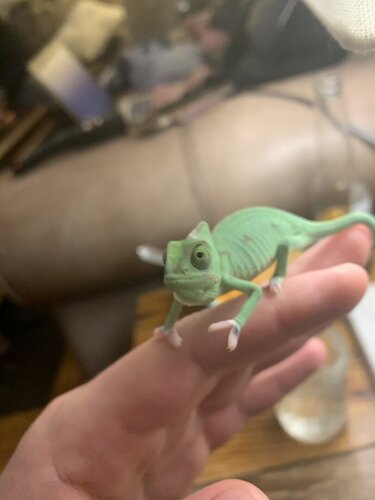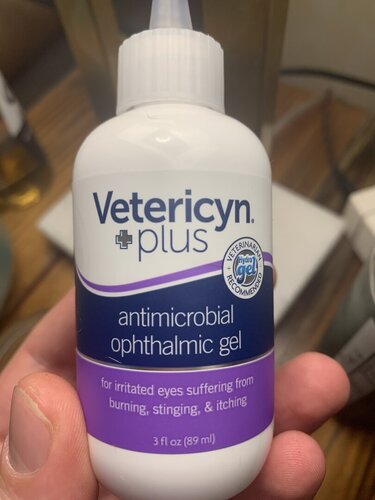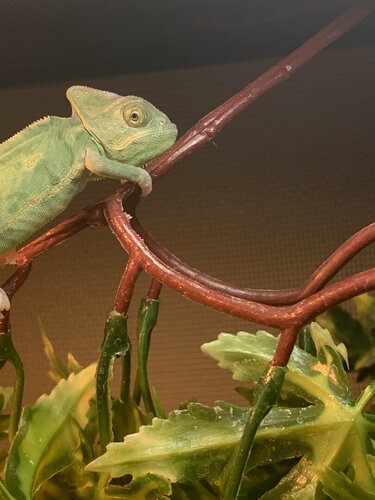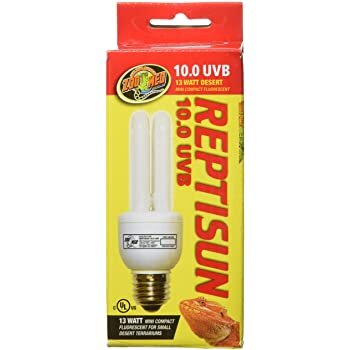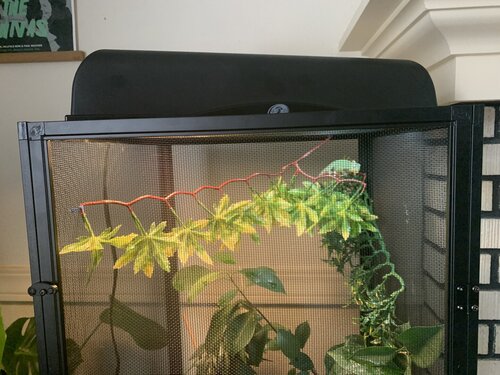GrantOsman
New Member
Hi everyone. I’m very concerned about my baby veiled Chameleon’s eye. I’ve only had her for a few weeks and she was perfectly healthy when I got her. She is in an all mesh enclosure with plenty of space and a lot of foliage to climb around on (real and fake plants) (the real plants are ok for Chams). She is very active and uses all areas of her habitat to climb around on. She eats around 10 or so crickets a day that are the correct size, occasionally powdered with calcium and vitamin D powder. She has a uvb bulb along with a regular house bulb to provide heat in a zoomed lamp that is sitting on top of the enclosure. She has a regular basking spot a few inches away from the basking bulb on the highest vine. I mist her enclosure many times a day and never spray her directly. I don’t think she is dehydrated or too hot or cold. Her body color looks good and her urates are white. She has a voracious appetite like normal babies. She has shed once since we’ve had her. A few days after her first shed her eye began looking dry. I thought maybe she was beginning to shed again and didn’t think much of it. As another day passed, her eye began to look crusty and more dry and also misshapen and discolored with limited mobility. It’s has a crusted over look to it, but it wasn’t showing typical signs of regular infection I was finding online (aka really swollen and producing discharge or completely closed). Her eye has remained open. She also scratches it on branches frequently and was doing that thing where they try and press their eye in to clean it. It’s very concerning and I don’t know what the cause is. It’s now the weekend and I have to wait until Monday to take her to the vet ASAP. I have spoken to the vet and a few pet stores and I’m applying Vetericyn gel to her eye to try and lubricate it and keep it clean until then. The gel appears to help with it itching but has also created a glaze over the eyeball and I’m fairly certain she can barely see anything out of that eye. If you’ve seen anything like this or have any info I’d love to here from you. If I forgot any details feel free to ask. I’m very concerned...

